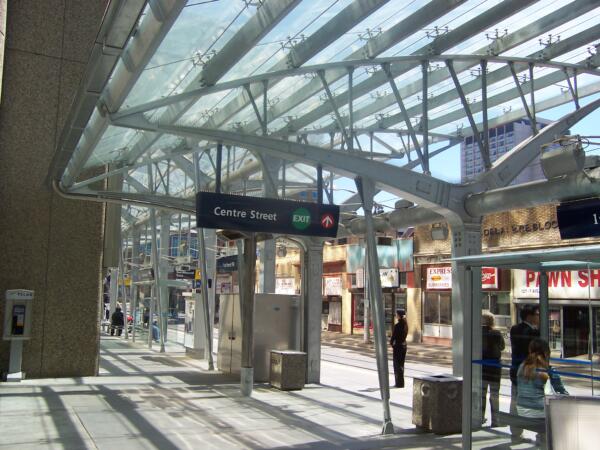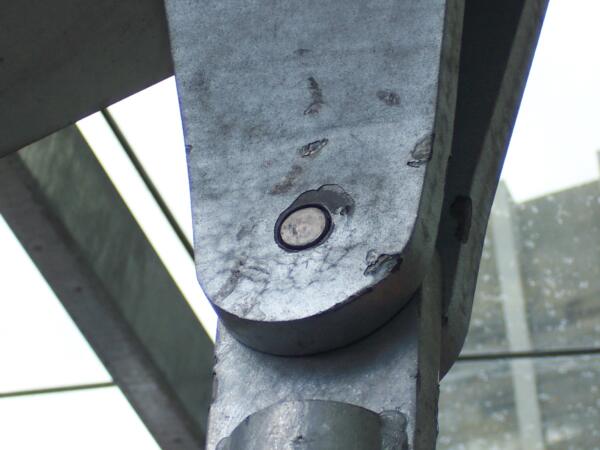Mass Transit

Supporting growing intercity passenger and commuter rail services can come with a price tag On average, new light rail construction in the U.S. costs approximately $35 million per mile. In addition to passenger rail, freight rail use continues to increase as well. By the year 2020, freight rail tonnage is expected to increase by at least 50%, making an investment in protecting rail infrastructure imperative to keep costs manageable. Passenger and freight rail alike have been used for generations, long before cars, semi's, and buses filled the roads, and will continue to be of use on into the future. Utilizing hot-dip galvanizing to protect the rail and bus infrastructure will ensure these investments are protected from corrosion for many decades.
Rail & Bus Systems
Whether a grand terminal or humble bus stop, a light rail, commuter rail, or bus station is the first point of contact for public transportation users. They are consistently exposed to the rigors of environmental exposure, and suffer from the daily wear and tear of bustling city life. Incorporating hot-dip galvanized steel in benches, station structure, stairways, and pedestrian bridges will keep these station elements standing strong, corrosion-free, as throngs of passengers pass through every day.
Utilizing hot-dip galvanized steel for a bus stop structure or rail station means the entire structure will benefit from the superior barrier and cathodic protection provided by the zinc coating. Hot-dip galvanized steel will stand strong against the daily onslaught of sun, rain, snow, and other natural elements, as well as fend off the damaging effects of chemicals from traffic pollution or de-icing chemicals. Galvanized steel substructure elements will make good use of the inherent cathodic protection of the zinc coating, meaning if individual areas of underlying steel or iron become exposed by as much as 1/4" in diameter, the surrounding zinc will sacrificially provide these areas with corrosion protection for as long as the coating lasts. With galvanized steel, day-to-day nicks and scratches caused by passing crowds will not compromise the corrosion protection of the entire structure.
Aesthetics
Hot-dip galvanized steel station and bus stop structures can take advantage of steel's ability to be shaped into a variety of aesthetically pleasing forms. This flexibility allows for a range of design possibilities affecting both beauty and functionality. Steel framed stations can take on a variety of appearances, using arches, cables, sheet steel, and more to create a design limited only by the creator's imagination. The protection of the zinc coating created during the galvanizing process supports these complementary features by protecting them from unsightly rust stains and streaks. As the structure, benches, railing and fences of a station or stop will be constantly exposed to the damaging effects of sun, wind, water, and industrial pollution, a natural, attractive corrosion protection system must be implemented. Structural shape and material finish add to the overall appeal of a public transportation stop, and will encourage passengers to make use of their services.
Additionally, the unfortunate possibility of crime, vandalism, or graffiti is also less cause for concern when using galvanized steel. Because the zinc is metallurgically bonded to the steel, the coating can withstand the scrubbing or chemical cleaners used to eliminate graffiti without fear of scratching or degrading corrosion protection. Galvanized steel can be easily cleaned without damage to the protective zinc coating.
Maintenance-Free
With the high number of bus stops dotting the city landscape, it is impractical to use a corrosion protection system that requires routine maintenance stops. Galvanized steel provides a solution to this costly hassle, because the steel will be protected for 75 years or more with little or no maintenance, there is no need to arrange expensive and continual maintenance for a city-wide network of stops or stations. With galvanized steel, passengers do not suffer from either the direct or indirect costs of routine maintenance
Structural Safety
Particularly important to bus stops or rail stations that provide overhead coverage, structural stability cannot be maintained if the structure has been weakened by the ravages of corrosion. If an overhead structure is compromised by rust deterioration, it could potentially collapse onto the passengers below. Hot-dip galvanized steel pieces will stand strong against corrosion, preserving the structural integrity of these overhead elements and protecting travelers.
Rail Line Infrastructure
While a station is the faceplate and first impression of a commuter rail system, it is the line infrastructure that keeps train operations running smoothly and on time. Key elements of commuter and freight rail infrastructure that can benefit from the corrosion protection of hot-dip galvanized steel include protective fencing, light poles and cable supports, track fasteners, and substations, the critical rail cars (boxcars, hoppers, stock cars, etc.), as well as supporting features such as noise barriers and reinforced earth walls. Low maintenance, durable galvanized steel will allow these infrastructure elements to continue working under the rigors of constant environmental exposure, protect rail cars and cargo alike, and keep line service uninterrupted by routine maintenance or corrosion-related deterioration.
Durable/Maintenance-Free Protection
Stretching across miles of terrain, the majority of both commuter and freight rail infrastructure is exposed to the elements in outdoor spaces. Rain or shine, railcars, fencing, light poles and cable supports, substations, noise barriers, and other structures face pelting rain, falling snow, fog, and UV exposure. Hot-dip galvanized steel is unaffected by UV rays, and will not deteriorate due to exposure to the sun.
The abrasion resistance created by the combined protection of barrier protection, cathodic protection, and the zinc patina is particularly valuable for freight cars, which must be able to withstand the abuse of cargo loading. Protection means cars will stay in use longer and can loaded and unloaded without worrying about creating critical damage. It also means steel railroad cars will get cargo safely to its destination without fear of structural damage due to corrosion.
With the high number of these pieces scattered across a wide expanse, it is impractical to use a corrosion protection system such as paint that requires routine maintenance to continue working. Many structures are located in difficult to reach or private access areas, such as the Marathon Oil Bridge. Spanning across eleven active railroad tracks and accessible only by private property, the bridge would be very difficult and time-consuming to maintain. Luckily, galvanized steel provides a solution to this costly hassle, because the steel will be protected for 75 years or more with little or no maintenance, there is no need to arrange expensive and continual maintenance for a city-wide network of infrastructure.
Required maintenance will cause portions of the infrastructure to be put out of use for the length of the maintenance period. Accommodating these shutdowns can slow travelers down and frustrate them, perhaps changing route schedules and timetables. This creates a negative impression that may even turn off passengers from using the system again in the future. With galvanized steel, passengers do not suffer from either the direct or indirect costs of routine maintenance.

Preserve Fastener Integrity
To secure elements of the rail track, anchor rods and bolts, nuts, stakes, washers, and other fasteners are used. These pieces hold the track steady and are critical to safe travel of the trains and passengers above. However, these pieces are constantly exposed to corrosive elements that can weaken their performance, or even deteriorate them to the point of failure. Hot-dip galvanizing fasteners provides them with superior corrosion protection that will keep them uncorroded and holding on tight.
Bolts and other fasteners are unique because often they have many curved surfaces, edges, or corners. Hot-dip galvanizing provides uniform coatings on these surfaces, because the process develops the zinc coating by way of a metallurgical reaction. By their nature, threads are curved with many edges and corners, as are bolt heads. If they are not adequately coated, corrosion can begin first on these areas. Corrosion on threads can create safety issues due to reduced fastening strength, while corrosion on bolt heads can create rounded heads that can be easily stripped. Coating uniformity is very important to ensure a consistent coating across the length of the bolt or other fastener.
Mass Transit Case Study
Calgary, AB LRT Refurbishment- Galvanized in 2005
The City of Calgary, Alberta is a leader in the use of hot-dip galvanizing and duplex systems for infrastructure. Over the past decade, duplex systems have been used extensively on major overpass guardrails and pedestrian rails. Recently, the city has specified galvanizing for all reinforced steel in bridges. So when the city was ready to refurbish the 7th Avenue Light Rail Transit (LRT) System, hot-dip galvanizing was the logical choice. Because many commuters rely on the rail system, turnaround time was of the essence. The system had to be de-energized, erected, and re-energized in a 72-hour time frame to minimize the impact on commuters. To create a uniform appearance, all hardware, hollow structural steel cords, tension members, columns, upper and lower arms, ornamental light posts, handrails, benches, and trash bins were hot-dip galvanized. The durable coating will be able to withstand the extreme winter climate and constant foot and rail traffic, while remaining aesthetically appealing. Following the success of this project, they galvanized similar station refurbishments along the line.
